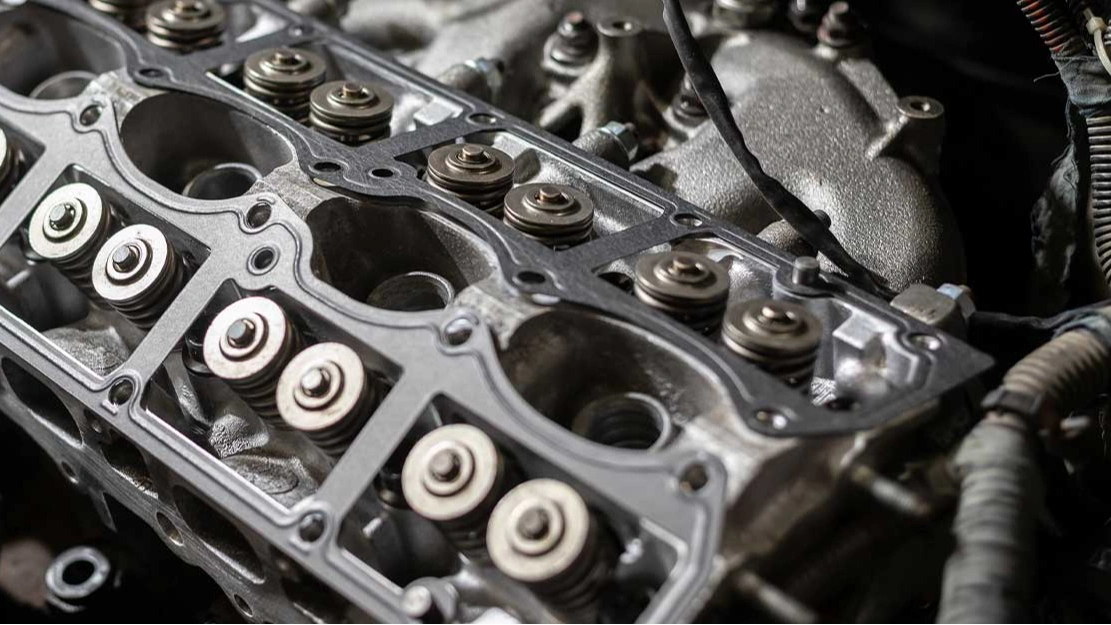Inspection et réparation de la qualité des culasses : le secret pour prolonger la durée de vie du véhicule
Date de sortie : 20/10/2025
Table des matières
La culasse est un composant essentiel du moteur d'un véhicule, impactant directement ses performances et sa durabilité. Avec le vieillissement du véhicule, la culasse peut s'user, se déformer ou s'endommager, ce qui non seulement réduit le rendement du moteur, mais affecte également la durée de vie du véhicule. Par conséquent, une inspection et une réparation régulières de la culasse sont essentielles pour garantir la longévité de votre véhicule. Makewed présente les pannes courantes de culasse, les méthodes de détection et les techniques de réparation afin d'aider les automobilistes et les entreprises à améliorer la durée de vie de leurs culasses et à prolonger celle de leurs véhicules.
Défaillances courantes des culasses et leurs impacts
Les défaillances de culasse entraînent souvent des performances instables du moteur, ce qui affecte le fonctionnement du véhicule. Parmi les défaillances courantes de culasse, on peut citer :
Fuite de culasse
Une fuite dans la culasse peut entraîner une pression insuffisante dans le cylindre, ce qui affecte la combustion du moteur. Les causes courantes de fuite sont un endommagement du joint entre la culasse et le bloc-cylindres ou une déformation de la surface de la culasse.
Déformation de la culasse
Les culasses peuvent se déformer ou se fissurer suite à une exposition prolongée à des températures et des pressions élevées. Ceci est particulièrement vrai pour culasses en alliage d'aluminium, qui sont plus souples et plus sensibles à la dilatation thermique et aux changements de contrainte, ce qui entraîne des irrégularités de surface, ce qui affecte à son tour les performances d'étanchéité.
Surchauffe de la culasse
La dissipation thermique de la culasse est essentielle au bon fonctionnement du moteur. Un dysfonctionnement du système de refroidissement de la culasse peut entraîner une surchauffe du moteur, susceptible de provoquer des dommages.
Méthodes d'inspection de la qualité des culasses
Pour garantir le bon fonctionnement de la culasse, des contrôles qualité réguliers sont essentiels. Voici quelques méthodes courantes d'inspection des culasses :
Inspection visuelle et inspection des fissures
Commencez par inspecter la surface de la culasse pour déceler toute fissure, usure ou déformation. Les fissures apparaissent généralement près des surfaces d'étanchéité ou des canaux de refroidissement de la culasse, affectant son étanchéité et sa dissipation thermique. Un équipement spécialisé de détection des fissures permet de détecter efficacement ces minuscules fissures.
Contrôle de la planéité de la culasse
Après une certaine période d'utilisation, la culasse peut présenter des irrégularités de surface, ce qui peut affecter l'étanchéité entre le cylindre et la culasse. Utilisez un équipement de contrôle de planéité de précision pour vérifier la planéité de la culasse et vous assurer qu'elle respecte les tolérances spécifiées.
Test de pression de la culasse
Effectuez un essai de pression sur la culasse pour vérifier son étanchéité. Cet essai simule l'environnement de fonctionnement haute pression de la culasse et identifie les fuites potentielles.
Test du cycle thermique
La performance de dissipation thermique de la culasse est essentielle au bon fonctionnement du moteur. En simulant les fluctuations de température dans l'environnement de fonctionnement du moteur, un essai de cycle thermique vérifie que la culasse peut maintenir des performances stables à haute température.
Conseils de réparation et d'entretien des culasses
En cas de dysfonctionnement d'une culasse, une réparation rapide est essentielle pour prolonger la durée de vie du véhicule. Voici quelques problèmes courants. culasse conseils de réparation :
Remplacement du joint
Un joint de culasse endommagé est une cause fréquente de fuites. Inspectez régulièrement le joint pour détecter tout signe d'usure et remplacez-le si nécessaire afin d'assurer une étanchéité parfaite entre la culasse et le bloc-cylindres.
Réparation des fissures et des déformations
Les fissures ou déformations mineures peuvent être restaurées grâce à un rabotage et un polissage de la culasse. En cas de fissures ou déformations plus importantes, il est recommandé de remplacer la culasse afin de préserver les performances globales du moteur.
Inspecter et nettoyer le système de refroidissement
Un blocage du système de refroidissement de la culasse peut provoquer une surchauffe. Vérifiez régulièrement le débit du liquide de refroidissement et nettoyez le radiateur et les conduits de refroidissement pour garantir un refroidissement optimal et éviter toute surchauffe de la culasse.
Entretien et nettoyage réguliers
Pour prolonger la durée de vie de la culasse, un nettoyage et un entretien réguliers sont essentiels. Utilisez des produits de nettoyage appropriés pour nettoyer la surface de la culasse afin d'éviter les dépôts et les saletés susceptibles d'affecter la dissipation thermique.
Conclusion : la clé pour améliorer la durée de vie de la culasse
L'inspection et l'entretien de qualité des culasses sont essentiels pour garantir le fonctionnement stable et durable du moteur de votre véhicule. Une inspection régulière et un entretien régulier permettent de prévenir efficacement les pannes de culasse, d'améliorer le rendement et la durabilité du moteur, et de prolonger la durée de vie de votre véhicule. Pour les constructeurs automobiles et les ateliers de réparation, la maîtrise des techniques d'inspection et d'entretien des culasses améliore non seulement la qualité des produits, mais aussi la confiance et la satisfaction des clients.
Pour toute question concernant les culasses de moteur, veuillez contacter Makewed. Nous sommes une entreprise intégrant production, R&D et ventes, spécialisée dans la production de culasses automobiles de marqueNous vous fournirons les solutions de culasse les plus complètes.


